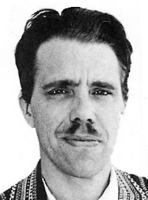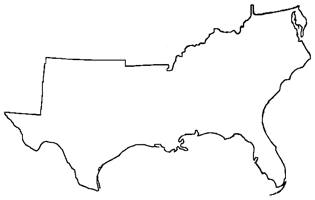
|
The Society of Folk Dance Historians (SFDH)
Dance and Music in Dixie – 1860-1865
[
Home |
About |
Encyclopedia | CLICK AN IMAGE TO ENLARGE |

|
 The dance situation in America during the period of the War Between the States (as well as just prior to that occasion) was particularly healthy, both in the folk and the social dance fields. This was all the more true in the Confederate States, that area which had just apparently achieved its goal of nationhood and was luxuriating in a feeling of celebration. Besides, the southerners were always a dancing people. Look at the popular dances of today, as well as the "fad" dances of this present half-century since the first World War (and some of those from before that date), and also, those dances we see on our folk dance festival programs listed as "American." A large majority of them had their origins in the South.
The dance situation in America during the period of the War Between the States (as well as just prior to that occasion) was particularly healthy, both in the folk and the social dance fields. This was all the more true in the Confederate States, that area which had just apparently achieved its goal of nationhood and was luxuriating in a feeling of celebration. Besides, the southerners were always a dancing people. Look at the popular dances of today, as well as the "fad" dances of this present half-century since the first World War (and some of those from before that date), and also, those dances we see on our folk dance festival programs listed as "American." A large majority of them had their origins in the South.
In the urban areas, especially the larger and/or important cities of Richmond, Atlanta, Savannah, Charleston, and Mobile and others perhaps not so populous but still noted cultural centers, the society ball continued to prevail, along with the other artistic aspects of the high society. The same held true for the large, self-contained plantations, though not as often. The balls were not as restricted, however, as in Victorian England where practically every other dance was a Waltz with an occasional Polka. The Waltz had become very popular in America, and the Polka craze was in full swing. Dancing masters were cranking out dances by the score. A dance handbook published in 1862 listed some 500 different dances with directions of how to do them, etiquette, suggestions for dress, and other trivia. Popular dances, found on many a program, included some we know today such as the Varsouvienna, the Spanish Dance (our Spanish Circle done in a series of lines and progressing in the manner of the Santa Barbara Contradanza), and the ,Virginia Reel to name a few. A battle victory or a new song was reason for a dance with a new song. Within a short time after the victory at First Manassas, the people in Richmond were dancing the Manassas Polka.
As with almost every other land, the further down the social ladder one progressed, the more energetic the dances became. As the stately Polonaise worked down to the Polka and the peasant dances in Europe, so did the cotillion and elegant dances in the Southern states find their matches in the vivacious dances of the Appalachians, the Hoedowns, and at the other end, the uninhabited dances of the slaves on the plantations. Often, they were the same dances, but being done in a different degree of restraint, appeared to be different dances. Many of the dances which were considered the popular dances of the era, that is, those accepted in the ballroom, are considered folk dances today.
Army camps near the small towns and plantations often provided the music for dances with their bands. In the Confederate Army, the musicians were considered a special rank, and received a separate scale of pay. Women entertained their beaux with singing and dancing parties when the men came home on one of their rare furloughs, and especially if there was a regiment from the particular area or city, there was always a big dance that was organized to welcome them back (and a lot of lost time to be made up in a short while!). Here too, the Army musicians sometimes performed, but often, it was the local brass band, and occasionally, a small group of Black musicians. When the soldiers were away though, social activities were rather quiet, and the young teen-age brothers still at home, found themselves filling for their older siblings and fathers.
Camp dances were fairly common, sometimes quite large affairs, and music was such as could be found. Some rather weird instruments had to be extemporized, such as a "cross-fiddle," a half of a whiskey barrel with a skin drumhead nailed over it and strings accordingly. These instruments managed to achieve a melody (in the hands of proper owners, of course), a melody sufficient to make them much demanded, not only by their own regiments and the Hoedowns in the camps, but even for dance programs of the civilians in the small towns as well. Such favorite tunes well known to the Contra and Square Dancers of those days as well as those of the now, included Arkansas Traveler, Money Musk, Hell Loose in Georgia, and Pop Goes the Weasel. On occasion, there would be visitors' day in camp, and if there were enough ladies present, a genuine dance would be held. At these times, Waltzes and Polkas proved the most popular, for it gave an opportunity to dance close with a "lady partner," although Squares were also well-liked. These events were rare, however, and the dance-loving Confederate soldiers in the encampments in the evenings between the battles had to put on affairs without women. Sometimes, if bonnets, aprons, and ribbons could be found, those soldiers taking the woman's part would tie them on and go through the motions, but as a rule, the lads in grey would just pair up and go through their squares or longways dances, do-sa-doing, arm swings, or allemanding, thoroughly enjoying the whole thing.
The Squares were more popular in the western areas. A Lt. Colonel Freemantle of the British Coldstream Guards, visiting as a military observer, described a dance in Texas; ". . . in the evening, we went to a dance given by Colonel Manley which was great fun. I danced in an American Cotillion with Mrs M. It was a very violent exercise and not the least bit like anything I had ever seen before. A gentleman stands by, shouting out the [calls for] the various figures to be performed, and everybody obeys his orders with much gravity and energy. . ." (Obviously, long before the time of Herb Greggerson!)
Naturally, food, rest, and home were the most desirable items in the mind of Johnny Reb, but following that, music and dance probably topped the list when it came to recreation. While gambling was more attainable, and liquor often so (though not always), for almost every Southern soldier had a well-worn pack of cards in his pocket. A flute, fiddle, banjo, or harmonica or combination of any or all, would break up just about any card game as the men in grey and butternut gathered to sing songs of home and country and then break out into a Reel or Jig at the sound of the proper music. Dancing became energetic and you really "popped" in Pop Goes the Weasel. Then, as the evening closed in, the dance gave way to the singing of popular songs, old familiar hymns, patriotic airs, parodies on the songs of the enemy, and songs of home as they gathered round the campfires before lights-out. Some of these songs were equally popular to both sides – Tenting Tonight and Just Before the Battle, Mother are a couple of examples.
Back in the cities, as the conflict continued and the situation worsened, merrymaking continued, as though the citizens sought an emotional "escape" from the realities of the approaching ruin. It is rumored that even on those first days of April in 1865, as the sound of the guns of the approaching Union troops were heard in Richmond, music and dances were being heard and performed near Capitol Hill and the western part of town.
In the country, however, the tragedy had already fallen on the land, and there was no joy there. Everything was gone. There were exceptions though, and these were with the people who had sung and danced before, during, and after the War as it swirled around them but not materially affecting them. Some secluded areas of the Appalachians were relatively untouched (West Virginia had seceded from Virginia); Kentucky, the 13th star on the Confederate battle flag, had never officially left the Union; the War not only marginally touched the Oklahoma territories, so the dances of the hills, the Shakers in the two Kentucky colonies, and those rituals of the Native Americans were unaffected. Thus, the life customs and music, unchanged, remained pure, to be re-discovered by Cecil Sharp and other folklorists more than four decades later.
DOCUMENTS
- America, a country.
- Appalachia, a region.
- Appalachian Dance and Music, and article.
- Dance in Colonial Virginia, an article.
Printed in Folk Dance Scene, July/August 1978.
This page © 2018 by Ron Houston.
Please do not copy any part of this page without including this copyright notice.
Please do not copy small portions out of context.
Please do not copy large portions without permission from Ron Houston.